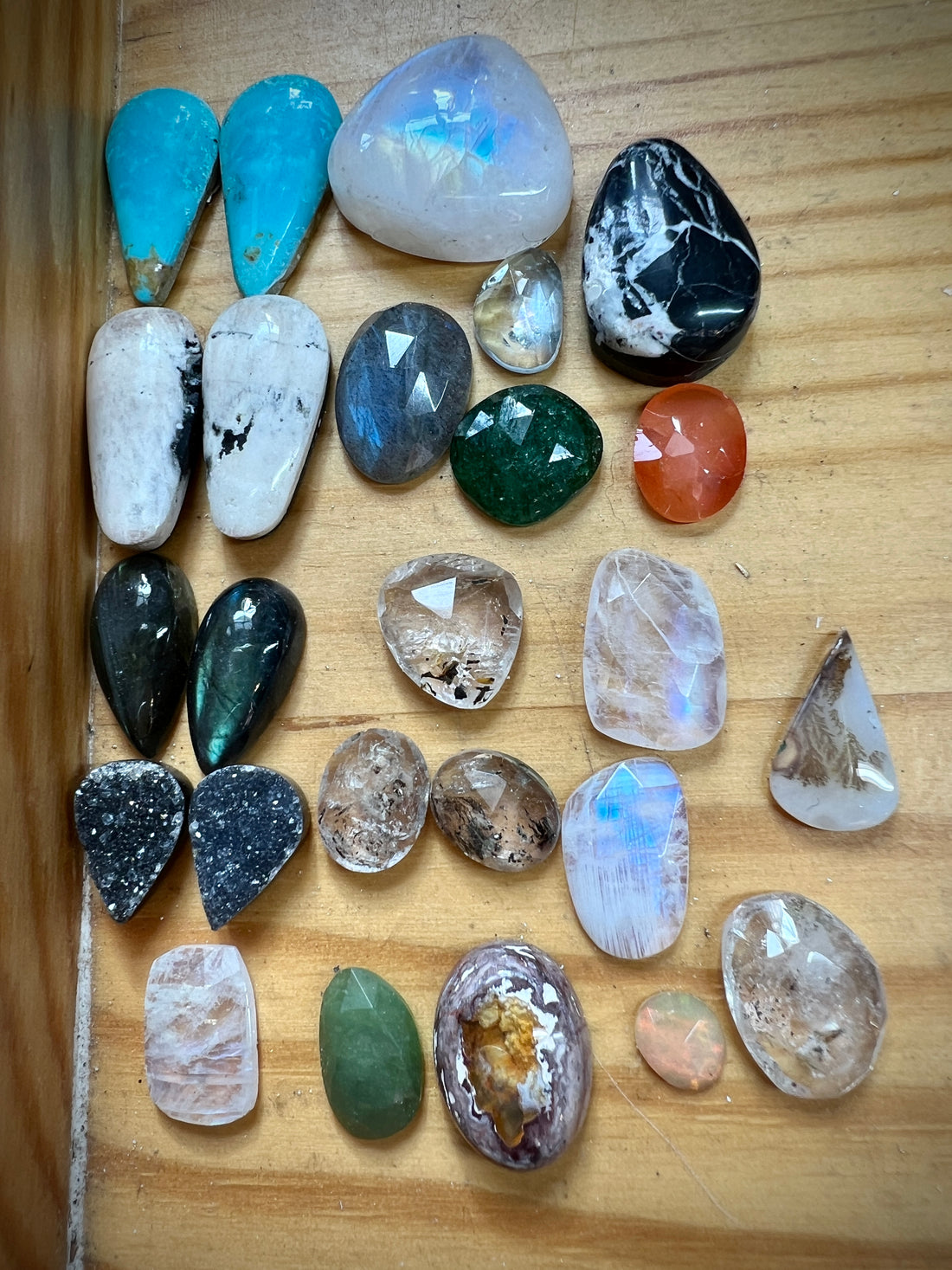The primary questions that I hear are where do I get my stones from and what does ethical sourced stones mean?
There's a lot to unpack here & before I delve in, want to give this disclaimer:
This is a massive topic & industry, so there’s a LOT to cover & also a lot I don’t know despite reading a fair amount on the subject. I'm learning all the time.
My dream is that we could use this is a place to educate, ask questions, share info, & be respectful as we all learn & hopefully continue to do our best.
I want to give caution in that we must beware of green washing. Apparently claiming to sell "ethically sourced stones" is common practice.
It's up to us to raise questions around these claims.
This screenshot is of a seller posing as a vendor of ethically sourced stones, but when I dug just a bit- in a polite & inquisitive way- it very rapidly became clear that the term had be coopted as a marketing ploy.

Stone sellers approach me via instagram on a regular basis. When I first began buying stones I was swept away by the aesthetic appeal of the stones & wasn't entirely aware of the humanitarian underpinnings connected to the industry. I brushed by the importance of digging for more information about where the stones came from & the conditions of the area. Now that I'm about 3 years deep into buying cabochons I've learned my way around a bit more, & now know that mining is a massive, worldwide industry that’s difficult to trace, mired in secrecy/ a lack of transparency, & exploitation, ie: (child labor, unfair treatment of workers, dangerous &/ or unhealthy, under paid, unpaid & other unfair working conditions), deforestation, water contamination, soil erosion which leads to landslides), loss of biodiversity, chemicals emitted from processes. This is now something that can't be unlearned, & thus forth is impossible to ignore, let alone separate from my purchasing options. Money is indeed- power.
Some countries are notorious for having a poor track record for miners, stone cutters, & land management; Here are just a small handful of factoids about the industry at large that I pulled from the web:
Myanmar’s jade industry—then spurred by demand from China—“helped finance a bloody ethnic conflict and unleashed an epidemic of heroin use and HIV infection among the Kachin minority who work the mines.” (2014 NY Times)
Afghanistan’s lapis lazuli mines provide the Taliban up to $20 million per year. (2016 Global Witness)
Democratic Republic of the Congo exports diamonds, malachite, gold & tourmaline among others, where children as young as 7 work in industrial mines. (2018 the New Republic)
Madagascar produces ruby, sapphire, emerald, aquamarine, beryl, tourmaline, topaz, garnet, cordierite, rose quartz, amethyst, and citrine where around 85,000 children work in mines (2019 the Guardian).
Of course I cannot speak for every mine in any of these places, but want to explain a bit more in depth some of what it means to be from conflict zones. Perhaps there are good mines in some of these countries; I do not know.
There are plenty more places to be weary of too, so again- always ask when purchasing.
Also, not all garnets are from Madagascar, nor all diamonds from the DRC, or all Lapis from Afghanistan, etc
There are companies both domestic & international that are working hard to set the bar higher for workers & on an environmental level by going into small towns, provide fair wages, build schools, hospitals, & community centers etc, as well as working solely with mines that focus on fair-trade, & are slowly changing the protocols & creating positive impacts that can be felt at each point.
Fair trade diamonds are becoming more ubiquitous from mines in Canada, Namibia, Botswana and South Africa.
A quick google search will result in worldwide safe choices for getting your hands on stones that you can rest easy about.
The best way to avoid stones from very likely exploitive situations are to avoid the "bargain"/ lowest-priced crystals, particularly if they're 30 percent or more lower-priced than competitors.
Ask in person & online sellers about the origins of their products. The supply chain should be far more traceable & we can slowly shift the standards together.
Being willing to pay a bit more for jewelry w/ ethically sourced crystals means you are ensuring workers safety, fair wages & that no child is being sent underground into dangerous, toxic (not enough oxygen) & unsafe tunnels underground.
Some folks even like lab grown crystals (not for everyone but it’s an
option)!
All in all, we can affect change together by educating ourselves & asking more questions.
After all, isn't jewlery so much more beautiful when you know that no one's been hurt in the process, but actually empowered? Energy is in everything.
